Celebrating a tradition of innovation, comfort and style
The BIRKENSTOCK journey spans centuries and is marked by our unique heritage story. From humble beginnings in a small German village in 1774, we’ve since pioneered game-changing designs like the contoured BIRKENSTOCK footbed, which have revolutionised footwear comfort.
Today, our impact on fashion and trends is global, yet we stay true to our traditional values, always committed to comfort, innovation and style. In Aotearoa New Zealand, men, women, and children love our functional and stylish collection of iconic shoes. Combining heritage craftsmanship with innovative design, BIRKENSTOCK has become a staple in Kiwi wardrobes across the motu.
Whether you're an age-old fan of BIRKENSTOCK or you're just discovering us, this guide is for you. We'll take you through our legacy story, show you our revolutionary approach to shoemaking, and highlight our influential role in the fashion industry. Plus, we'll explore iconic BIRKENSTOCK models and reveal how we keep innovating while staying true to our roots.
Shoemaking through the ages
European shoe-making has a rich history that spans centuries, reflecting the evolution of craftsmanship and fashion. In mediaeval times, shoes were often simple, designed for practicality rather than style, and varied depending on the region and available materials. Common models included turn shoes, which were constructed inside-out and then flipped to hide the seams, and wooden clogs, suited for labour-intensive work.
By the Renaissance, shoemaking had become more sophisticated. The introduction of new materials like leather and innovations in sewing techniques allowed for the creation of more intricate and fashionable footwear. This period also saw the emergence of distinct styles for men and women, with ornate designs and decorations becoming more popular.
The Industrial Revolution brought significant changes to shoemaking in Europe. The development of mechanised production techniques allowed for mass production of shoes, making them more affordable and accessible. Despite these advancements, traditional handcrafting methods were still valued, particularly in regions known for their artisanal heritage. This historical evolution laid the groundwork for modern European shoemaking, brought to life by Birkenstock.
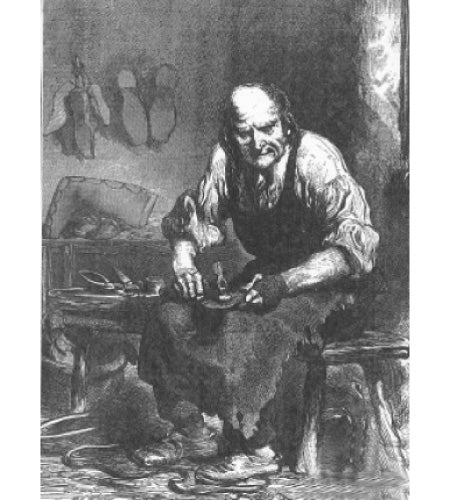
The Early Days of Birkenstock
The BIRKENSTOCK story began in 1774 when Johann Adam Birkenstock, a modest German cobbler from Langen-Bergheim, started crafting high-quality shoes prioritising comfort. Johann Adam and his family lived simple, rural lives, making shoes by hand.
In the tough German countryside, where harsh weather made durable clothing and footwear essential, most people owned just one pair of shoes for life, repaired over the years by their local cobbler. Shoemaking in the 1700s was a revered craft, vital to daily life. The poet Johann Wolfgang von Goethe acknowledged this in his 1776 work "Hans Sachsens Poetische Sendung," dedicated to a shoemaker.
Later on in the late 18th century, Konrad Birkenstock, Johann's great-great-grandson, continued the family tradition with a visionary twist. He believed that shoes should conform to the natural shape of the foot rather than forcing feet into unnatural positions. This philosophy was a departure from the stiff, rigid shoes of the time and set the stage for the development of the contoured footbed that still defines BIRKENSTOCK today.
Based in Frankfurt, near the family’s ancestral home, Konrad embraced the 'shoe reform' movement and turned its theories into reality. Like other innovative shoemakers of his time, he designed lasts—essential pieces of equipment that set the size and shape of the final shoe. Konrad’s bold, forward-thinking approach laid the groundwork for BIRKENSTOCKS global success and enduring world-class reputation for comfort, innovation and style.
The Early Days of Birkenstock
The BIRKENSTOCK story began in 1774 when Johann Adam Birkenstock, a modest German cobbler from Langen-Bergheim, started crafting high-quality shoes prioritising comfort. Johann Adam and his family lived simple, rural lives, making shoes by hand.
In the tough German countryside, where harsh weather made durable clothing and footwear essential, most people owned just one pair of shoes for life, repaired over the years by their local cobbler. Shoemaking in the 1700s was a revered craft, vital to daily life. The poet Johann Wolfgang von Goethe acknowledged this in his 1776 work "Hans Sachsens Poetische Sendung," dedicated to a shoemaker.
Later on in the late 18th century, Konrad Birkenstock, Johann's great-great-grandson, continued the family tradition with a visionary twist. He believed that shoes should conform to the natural shape of the foot rather than forcing feet into unnatural positions. This philosophy was a departure from the stiff, rigid shoes of the time and set the stage for the development of the contoured footbed that still defines BIRKENSTOCK today.
Based in Frankfurt, near the family’s ancestral home, Konrad embraced the 'shoe reform' movement and turned its theories into reality. Like other innovative shoemakers of his time, he designed lasts—essential pieces of equipment that set the size and shape of the final shoe. Konrad’s bold, forward-thinking approach laid the groundwork for BIRKENSTOCKS global success and enduring world-class reputation for comfort, innovation and style.
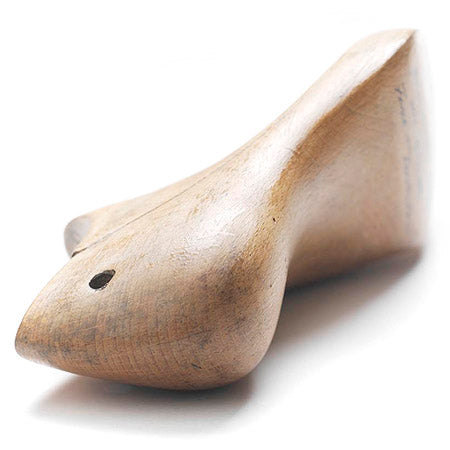
The Original BIRKENSTOCK Footbed
In the 1900s a growing subculture emerged, sparking new ideas about foot health. During this time, Konrad Birkenstock began to consider how the foot should naturally 'roll' inside a shoe. In 1902, his experiments led to the creation of the first insole. Before this, insoles for healing damaged feet were made of hard metal, based on the belief that feet needed to be 'fixed' in place to heal or stabilise.
For over a decade, Konrad experimented with various materials to develop the perfect insole. In 1913, he finalised a design using a mix of cork and latex and officially registered this product as the ‘Fußbett’ (footbed). This new footbed supported the natural movement of the foot, promoting better alignment and comfort. The introduction of Birkenstock’s orthopaedic footbed marked a significant breakthrough for the family business and for foot health.
Konrad’s dedication to improving footwear laid the foundation for our iconic modern footbed. Like the first footbed developed by Konrad Birkenstock so many years ago, today the BIRKENSTOCK footbed is still crafted from high-quality natural materials, including cork, latex, and jute - and is the cornerstone of every pair of shoes we release.
The Original BIRKENSTOCK Footbed
In the 1900s a growing subculture emerged, sparking new ideas about foot health. During this time, Konrad Birkenstock began to consider how the foot should naturally 'roll' inside a shoe. In 1902, his experiments led to the creation of the first insole. Before this, insoles for healing damaged feet were made of hard metal, based on the belief that feet needed to be 'fixed' in place to heal or stabilise.
For over a decade, Konrad experimented with various materials to develop the perfect insole. In 1913, he finalised a design using a mix of cork and latex and officially registered this product as the ‘Fußbett’ (footbed). This new footbed supported the natural movement of the foot, promoting better alignment and comfort. The introduction of Birkenstock’s orthopaedic footbed marked a significant breakthrough for the family business and for foot health.
Konrad’s dedication to improving footwear laid the foundation for our iconic modern footbed. Like the first footbed developed by Konrad Birkenstock so many years ago, today the BIRKENSTOCK footbed is still crafted from high-quality natural materials, including cork, latex, and jute - and is the cornerstone of every pair of shoes we release.
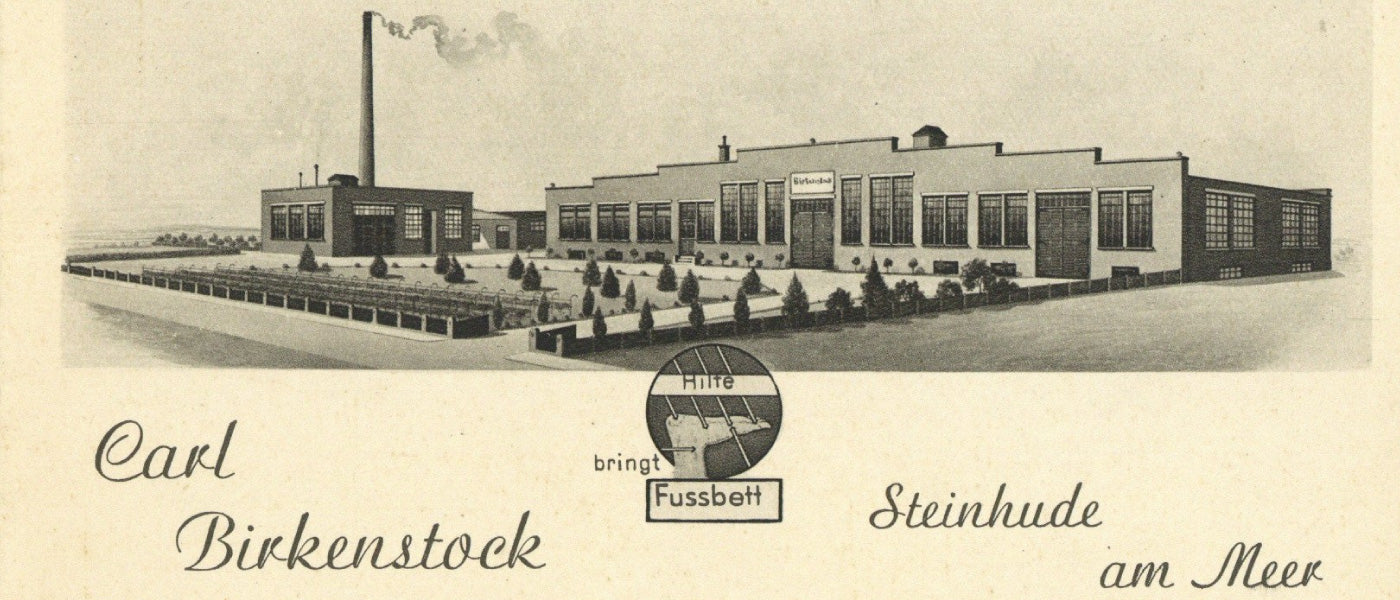
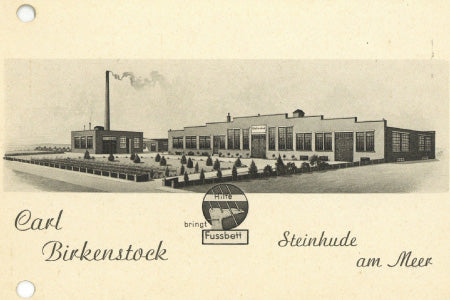
The Footwear Revolution
The early 20th century marked a significant turning point for Birkenstock. In 1925, Carl Birkenstock, Konrad’s grandson, expanded the family's vision by introducing the ‘blue footbed,’ a flexible, anatomically shaped insole that provided exceptional arch support and promoted natural walking in motion - or ‘walking as nature intended.’
Carl Birkenstock's dedication to foot health didn't stop with the blue footbed. He also authored a book, "Podiatry - The Carl Birkenstock System," which detailed his findings on the importance of proper foot support and alignment. This work played a crucial role in the shoe reform movement, advocating for shoes that supported the natural structure and function of the feet. The movement gained momentum, particularly among health professionals who recognized the benefits of BIRKENSTOCKS ergonomic designs.
In today’s BIRKENSTOCK footbeds, natural, sustainable materials are still selected for their durability, flexibility, and sustainability. And like the early footbed prototypes developed so many years ago, the BIRKENSTOCK footbed's unique construction includes a deep heel cup, arch support, and a roomy toe box, all designed to promote natural foot health and distribute weight evenly.
System Birkenstock
The success of BIRKENSTOCKS innovative designs is no accident; it's the result of a meticulously developed system known as System Birkenstock. This system includes sustainable practices and materials, ergonomic design principles, and rigorous quality manufacturing and training processes that ensure every pair of BIRKENSTOCKS are crafted to the highest standard.
Konrad and Carl Birkenstock pioneered the establishment of System BIRKENSTOCK - making sure these key principles were embedded in the family business. Carl, in particular, played a pivotal role by establishing education courses for shoemakers and shoe sellers - teaching them about the core principles of ‘System Birkenstock.’
Carl Birkenstock’s expert and comprehensive training helped create consistent footwear that could be trusted for unparalleled comfort and support. Through their combined efforts, Konrad and Carl revolutionised the footwear industry. Their commitment to promoting better foot health through innovative design, sustainability and training laid the foundation for BIRKENSTOCKS' enduring legacy as one of the world’s leading footwear brands.
BIRKENSTOCKS Iconic Models
Over the years, BIRKENSTOCK has introduced numerous iconic models that have become staples in the footwear and fashion industry. Each model combines timeless design with functional excellence, ensuring they remain popular year after year.
Our diverse range of shoe styles blends classic design with modern innovations. From our original open-toe sandals to closed-toe clogs to our latest water-friendly EVA line, BIRKENSTOCK shoes appeal to a wide range of preferences and lifestyles, always prioritising comfort, quality and style.
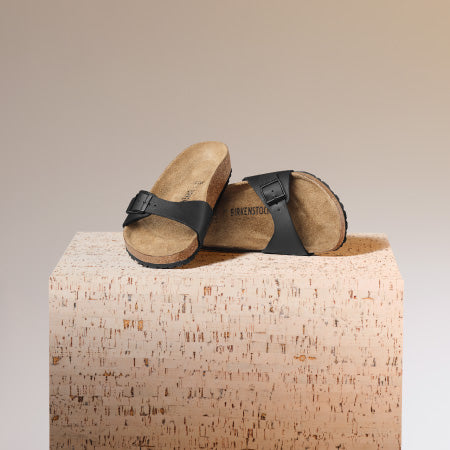
Madrid
Our Madrid open-toe sandal remains a timeless classic. First introduced in 1963, the Madrid is the oldest member of the BIRKENSTOCK family, featuring a minimalist design with a single strap. This elegant, straightforward look has made it a favourite for decades, appealing to anyone who appreciates understated style and superior comfort.
Madrid sandals are built around our signature BIRKENSTOCK footbed. Made from a blend of natural cork and latex, the contoured footbed moulds to the shape of your foot. The adjustable single strap also ensures a secure fit, while the lightweight construction makes them easy to wear all day long.
Another standout feature of the Madrid model is its versatility. Madrid sandals can be dressed up or down, making them suited to all sorts of occasions. Whether you’re heading to the beach, running errands, or going out for a casual lunch or dinner - Madrid sandals, available in a wide range of fashionable colours and finishes, offer guaranteed comfort and style.
Madrid
Our Madrid open-toe sandal remains a timeless classic. First introduced in 1963, the Madrid is the oldest member of the BIRKENSTOCK family, featuring a minimalist design with a single strap. This elegant, straightforward look has made it a favourite for decades, appealing to anyone who appreciates understated style and superior comfort.
Madrid sandals are built around our signature BIRKENSTOCK footbed. Made from a blend of natural cork and latex, the contoured footbed moulds to the shape of your foot. The adjustable single strap also ensures a secure fit, while the lightweight construction makes them easy to wear all day long.
Another standout feature of the Madrid model is its versatility. Madrid sandals can be dressed up or down, making them suited to all sorts of occasions. Whether you’re heading to the beach, running errands, or going out for a casual lunch or dinner - Madrid sandals, available in a wide range of fashionable colours and finishes, offer guaranteed comfort and style.
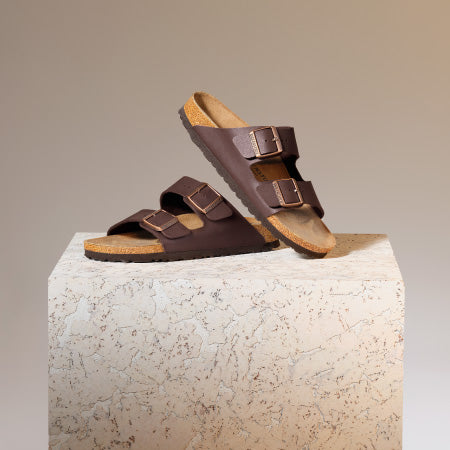
Arizona
Birkenstock’s Arizona sandals are another iconic and fashionable favourite known for their comfort and casual versatility. Introduced in 1973, the Arizona model quickly became a staple in the BIRKENSTOCK lineup. The simple design features two adjustable straps that provide a customised fit with meticulously crafted buckles.
Like all BIRKENSTOCK shoes, the Arizona sandal is built around our signature footbed. Designed to promote natural alignment, the BIRKENSTOCK footbed distributes weight evenly, which helps to alleviate pressure on your feet and improve overall foot health.
Arizona’s classic look and unmatched comfort have made it a popular model across generations. You’ll find Arizona sandals everywhere, from city offices and beachscapes to schoolyards and rural towns. The durable materials and attention to detail ensure years of comfort and style.
Arizona
Birkenstock’s Arizona sandals are another iconic and fashionable favourite known for their comfort and casual versatility. Introduced in 1973, the Arizona model quickly became a staple in the BIRKENSTOCK lineup. The simple design features two adjustable straps that provide a customised fit with meticulously crafted buckles.
Like all BIRKENSTOCK shoes, the Arizona sandal is built around our signature footbed. Designed to promote natural alignment, the BIRKENSTOCK footbed distributes weight evenly, which helps to alleviate pressure on your feet and improve overall foot health.
Arizona’s classic look and unmatched comfort have made it a popular model across generations. You’ll find Arizona sandals everywhere, from city offices and beachscapes to schoolyards and rural towns. The durable materials and attention to detail ensure years of comfort and style.
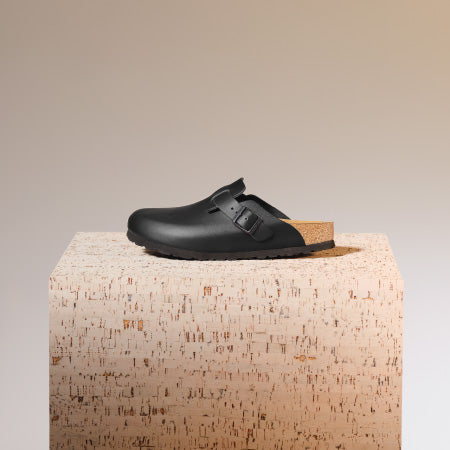
Boston Clog
The Boston Clog is another iconic BIRKENSTOCK model showcasing our fusion of comfort and style. With its closed-toe design and adjustable strap, Boston’s offers superior foot support with added protection for the toes.
Once again, the central feature of our Boston model is the contoured BIRKENSTOCK footbed. Boston clogs are perfect for both indoor and outdoor wear. Boston’s are particularly popular in cooler climates and are often worn with socks.
The classic yet contemporary design pairs well with everything from casual jeans to loungewear, making them a versatile addition to any wardrobe. Durability is another standout feature of the Boston clogs. High-quality materials and meticulous craftsmanship ensure they can withstand daily wear and tear, gaining character and comfort with age.
Boston Clog
The Boston Clog is another iconic BIRKENSTOCK model showcasing our fusion of comfort and style. With its closed-toe design and adjustable strap, Boston’s offers superior foot support with added protection for the toes.
Once again, the central feature of our Boston model is the contoured BIRKENSTOCK footbed. Boston clogs are perfect for both indoor and outdoor wear. Boston’s are particularly popular in cooler climates and are often worn with socks.
The classic yet contemporary design pairs well with everything from casual jeans to loungewear, making them a versatile addition to any wardrobe. Durability is another standout feature of the Boston clogs. High-quality materials and meticulous craftsmanship ensure they can withstand daily wear and tear, gaining character and comfort with age.
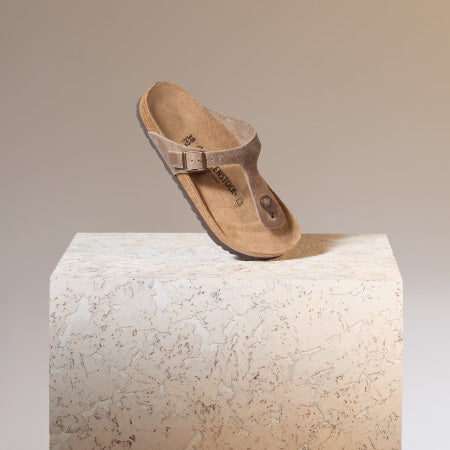
Gizeh
One of BIRKENSTOCKS newer models, the Gizeh thong, has won over fans worldwide. Known for its slim design, the Gizeh offers a modern twist on the classic thong sandal. It features a single-toe post and an adjustable strap that ensures a secure fit, making it comfortable and fashionable.
The Gizeh thong is not without the benefits of the BIRKENSTOCK footbed. The deep heel cup, arch support, and roomy toe box promote natural foot alignment and even weight distribution, making the Gizeh suited for all-day wear.
Gizeh thongs pair effortlessly with jeans, shorts and summer dresses. Available in a wide range of colours and materials, including classic leather, suede, and Birko-Flor, Gizeh allows you to express your style and enjoy the signature comfort of Birkenstock.
Gizeh
One of BIRKENSTOCKS newer models, the Gizeh thong, has won over fans worldwide. Known for its slim design, the Gizeh offers a modern twist on the classic thong sandal. It features a single-toe post and an adjustable strap that ensures a secure fit, making it comfortable and fashionable.
The Gizeh thong is not without the benefits of the BIRKENSTOCK footbed. The deep heel cup, arch support, and roomy toe box promote natural foot alignment and even weight distribution, making the Gizeh suited for all-day wear.
Gizeh thongs pair effortlessly with jeans, shorts and summer dresses. Available in a wide range of colours and materials, including classic leather, suede, and Birko-Flor, Gizeh allows you to express your style and enjoy the signature comfort of Birkenstock.
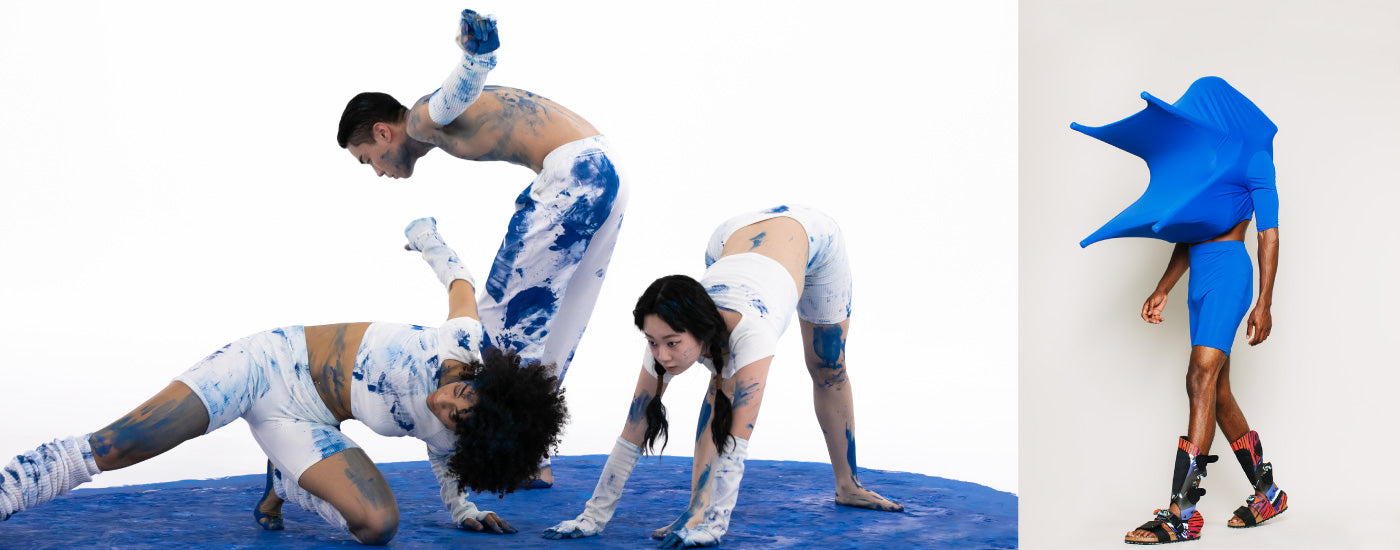
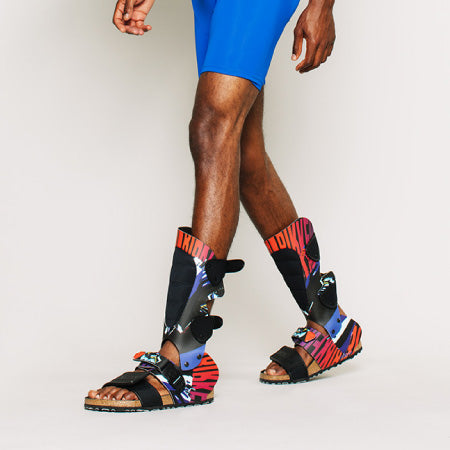
BIRKENSTOCK and Fashion
Over the past 50 years, BIRKENSTOCK has impacted fashion and trends, evolving from a niche comfort shoe to a mainstream fashion staple. This transformation is about our unique blend of functionality, innovation, and style plus an unwavering commitment to our traditional values.
In the 1970s, BIRKENSTOCK began gaining traction with counter-culture movements. Our emphasis on comfort and foot health resonated with health-conscious people looking for alternatives to mainstream fashion. BIRKENSTOCK sandals, especially our Arizona’s, became symbols of an authentic, natural lifestyle where comfort was valued over superficial trends.
The 1990s was a turning point, as the grunge movement embraced BIRKENSTOCK sandals. Iconic figures like Kate Moss and Winona Ryder were seen wearing BIRKENSTOCKS, bringing the brand into the spotlight. This era highlighted the versatility of BIRKENSTOCKS, proving they could be comfortable and fashionable, and that in fact, the magic lay in this fusion.
In the 2000s, BIRKENSTOCK continued to gain a global following, solidifying its place in the world of high fashion. High-profile collaborations with designers like Valentino, Rick Owens, and Proenza Schouler brought BIRKENSTOCK to international runways. These creative partnerships introduced innovative designs while retaining the core elements of BIRKENSTOCKS' iconic models.
Celebrities and influencers played a crucial role in popularising BIRKENSTOCK during this period too. Stars like Gigi Hadid, Kendall Jenner, and the Olsen twins were frequently spotted wearing BIRKENSTOCKS, both casually and in styled outfits. The rise of ‘ugly’ fashion trends further boosted Birkenstock’s popularity. The normcore and dad shoe trends, which celebrate practical and unpretentious styles, align perfectly with the BIRKENSTOCK aesthetic.
Beyond Birkenstock’s impact on global trends and style, our commitment to sustainability and ethical manufacturing has set a precedent in the fashion world. In an era where we should all be concerned about the environmental impact of our purchases, our choice to use natural, eco-friendly materials and sustainable production processes, is all part of our deep respect for the planet and our heritage.
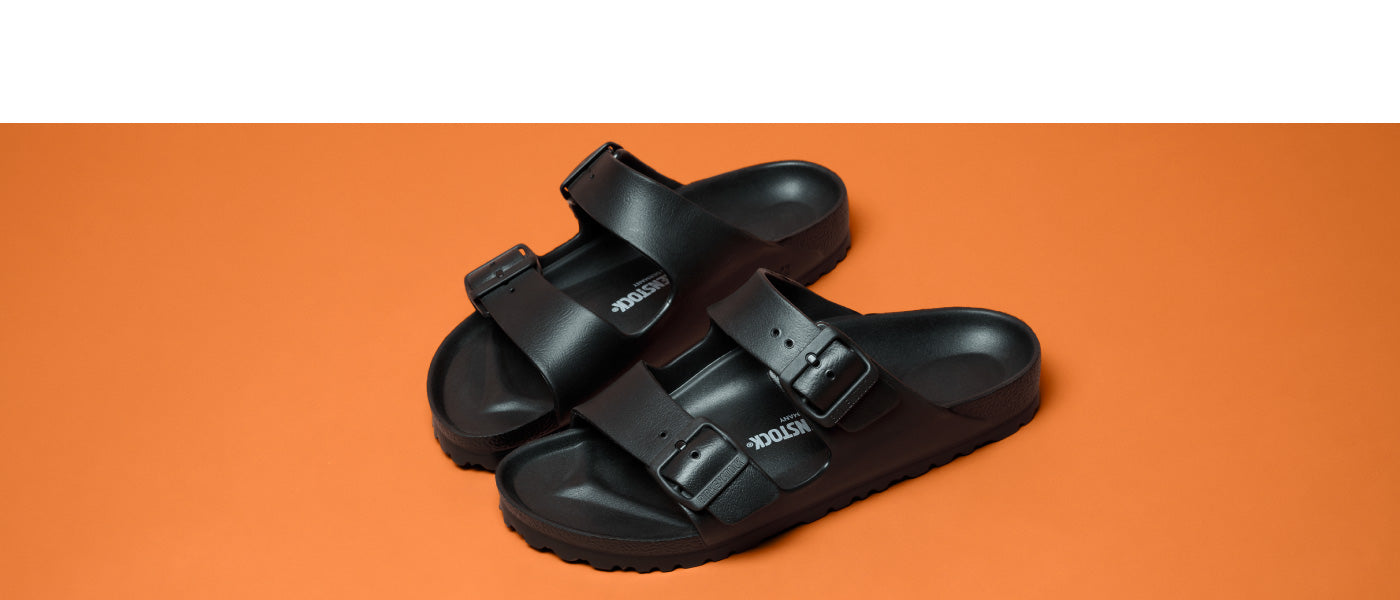
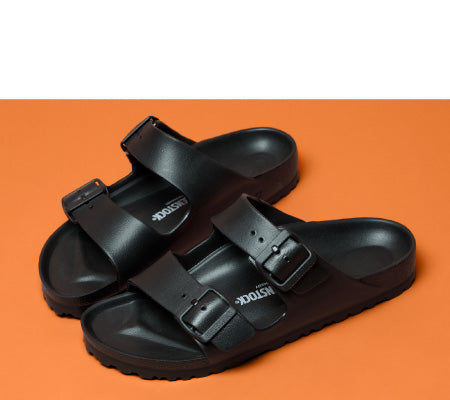
Birkenstock’s Evolving Path
While we remain deeply rooted in tradition, BIRKENSTOCK is also forward-thinking and continually evolving. In recent years, new product lines have been introduced, technological advancements have occurred, and new markets have been expanded.
One of our latest innovations is the introduction of water-friendly materials in some of our classic models. Our EVA Arizona sandals are designed to withstand wet conditions, making them perfect for beach trips and outdoor adventures while still providing the same comfort and support as the classic, leather models.
We’ve also embraced technological advancements in our manufacturing processes. The use of digital tools and automation has helped to improve efficiency and consistency, ensuring that every pair of BIRKENSTOCKS meets our high standards of quality.
Along with product innovations, BIRKENSTOCK has expanded its presence in new markets around the world. Our commitment to quality and comfort has universal appeal, and our efforts have been met with an enthusiastic response from people all over the world.
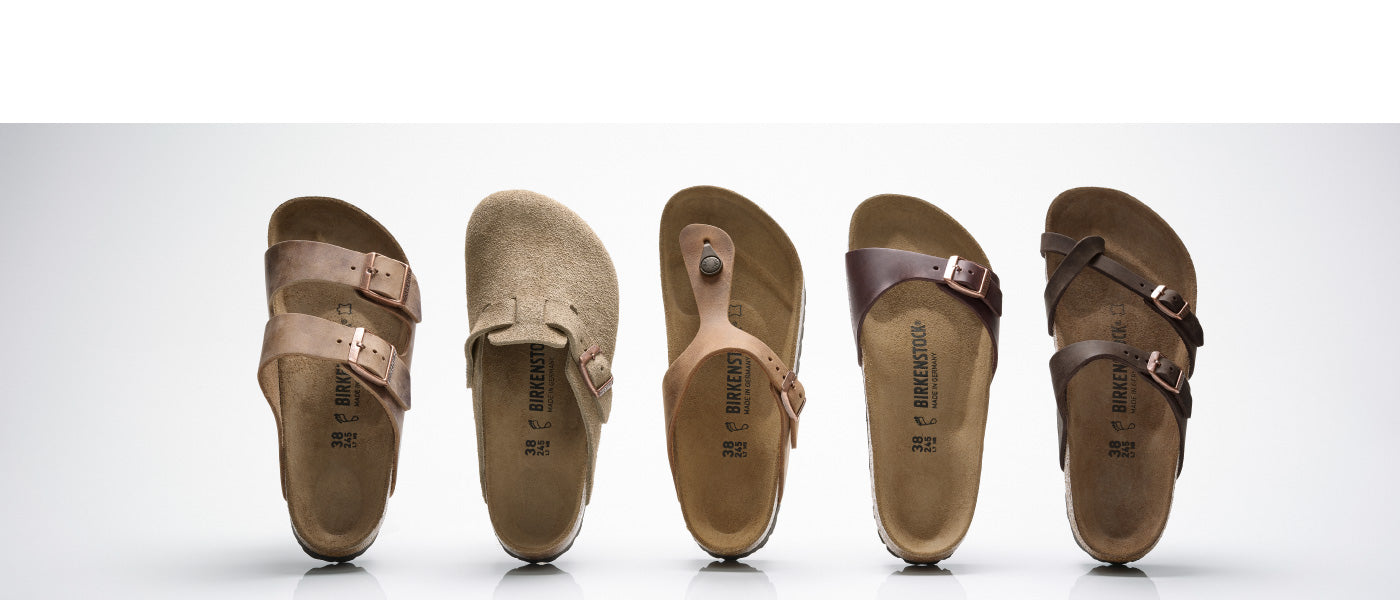

The BIRKENSTOCK Legacy Journey from 1774 to Now
Our story is about tradition, innovation, and a commitment to comfort and style. From our early shoemaking days to our current status as a global footwear icon, BIRKENSTOCK has consistently prioritised foot health setting the standard in the footwear industry.
The original BIRKENSTOCK footbed remains the cornerstone of all our footwear, complemented by System Birkenstock, ensuring sustainability, ergonomic design, and quality.
Our iconic models, like the Arizona sandal, Boston clog, and Gizeh thong, blend timeless design with functional excellence. From celebrities to high-fashion collaborations, BIRKENSTOCK shoes have become an iconic wardrobe staple for celebrities, fashionistas and everyday people alike.

